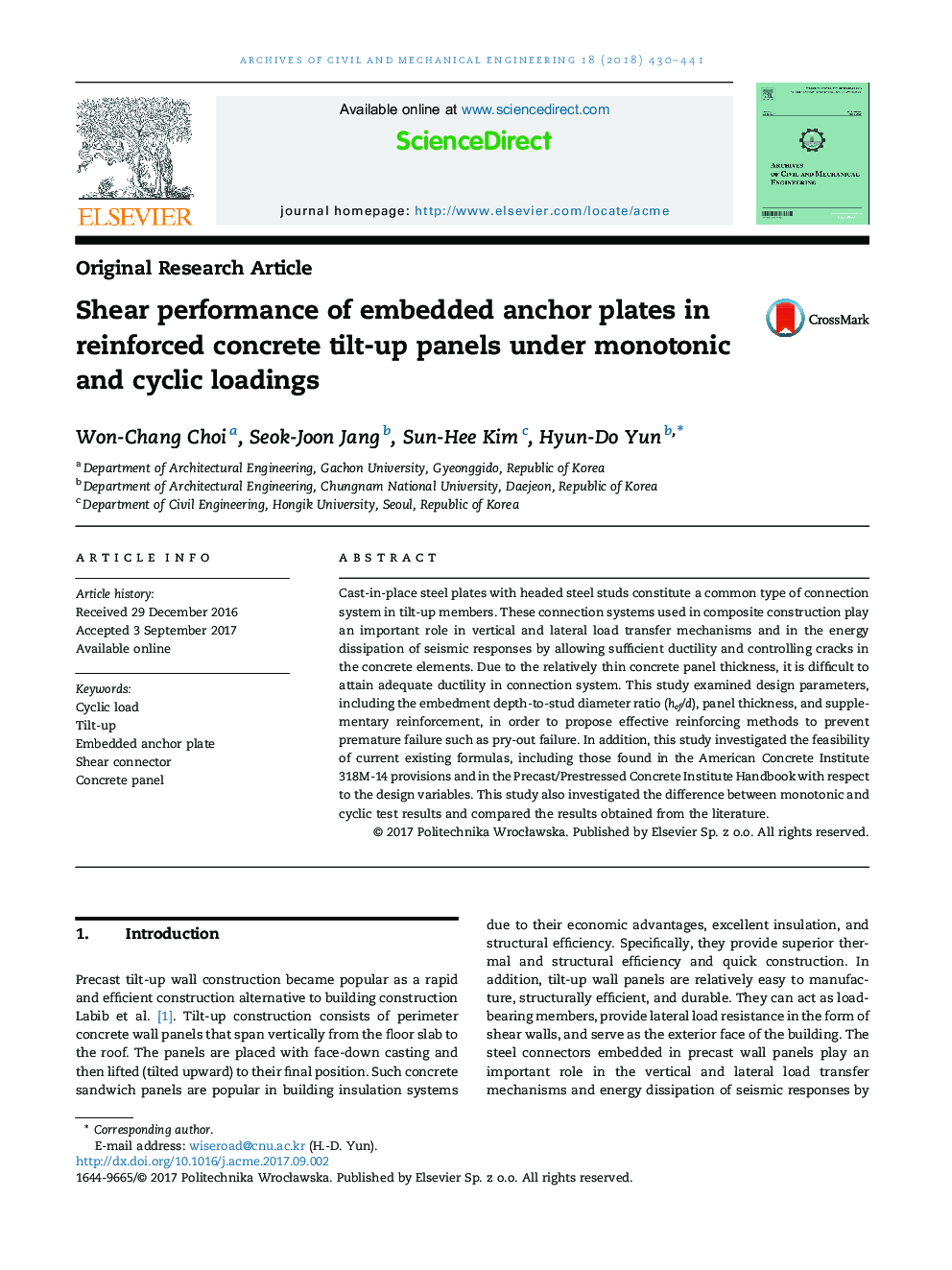| Article ID | Journal | Published Year | Pages | File Type |
|---|---|---|---|---|
| 6694615 | Archives of Civil and Mechanical Engineering | 2018 | 12 Pages |
Abstract
Cast-in-place steel plates with headed steel studs constitute a common type of connection system in tilt-up members. These connection systems used in composite construction play an important role in vertical and lateral load transfer mechanisms and in the energy dissipation of seismic responses by allowing sufficient ductility and controlling cracks in the concrete elements. Due to the relatively thin concrete panel thickness, it is difficult to attain adequate ductility in connection system. This study examined design parameters, including the embedment depth-to-stud diameter ratio (hef/d), panel thickness, and supplementary reinforcement, in order to propose effective reinforcing methods to prevent premature failure such as pry-out failure. In addition, this study investigated the feasibility of current existing formulas, including those found in the American Concrete Institute 318M-14 provisions and in the Precast/Prestressed Concrete Institute Handbook with respect to the design variables. This study also investigated the difference between monotonic and cyclic test results and compared the results obtained from the literature.
Keywords
Related Topics
Physical Sciences and Engineering
Engineering
Civil and Structural Engineering
Authors
Won-Chang Choi, Seok-Joon Jang, Sun-Hee Kim, Hyun-Do Yun,
